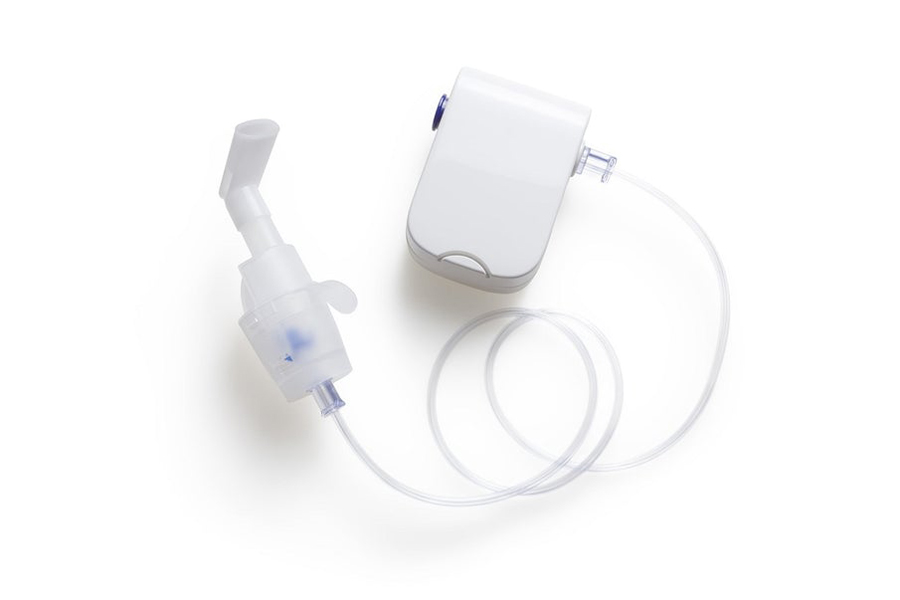Reviewing the Best Nebulizer Mask & What You Need to Know Before Buying
It’s no secret that respiratory illness is on the rise in the US. Did you know there are more than 25 million asthma cases, over 9 million people with chronic bronchitis, and more than 3 million cases of emphysema? These ailments trigger sporadic episodes of difficulty breathing, which can be alarming. Fortunately, a nebulizer mask ushers in much-needed relief.
With a wealth of options that have littered the market, how do you know the best option for you? In this guide, we’ll explore everything you need to know before buying a nebulizer mask to permit an informed decision.
what is a nebulizer mask?
It’s a breathing machine used to treat cystic fibrosis, asthma, and other respiratory ailments. It administers medication in the form of a spray/mist that’s inhaled. Nebulizer masks come in handy in scenarios whereby using an inhaler is challenging or proves futile. Furthermore, they are used to limit the side effects of medications such as steroids by administering the medicine directly to the respiratory system.
Nebulizers can be categorized into two.
Atomizer
Also known as a compressor nebulizer, it’s the most common. Atomizers rely on an aerosol compressor to vaporize medication droplets.
Ultrasonic
Synonymous with a mesh nebulizer, it uses high-frequency sound waves, making liquid medicine inhalable. Although ultrasonic models generate a similar outcome to jet nebulizers, they usually operate more quietly and offer quicker medication delivery.
With both types of nebulizers, patients inhale vapor through a face mask or mouthpiece.
how does a nebulizer mask work?
When using a nebulizer, medication is administered via a mouthpiece. A pre-determined amount of your liquid medicine is poured into the nebulizer’s reservoir. Then, a compressor tube is connected to the nebulizer at one end with the mouthpiece or face mask at the other.
The medication makes its way through the tube and right into a mouthpiece or mask via vibration or compression, converting it into a fine mist. Once you breathe deeply and slowly, the medication is breathed into your lungs, ushering in instant relief from breathing challenges. The treatments usually take anywhere between 5 and 10 minutes.
how to choose the best nebulizer mask
We’ve rounded up a few features to consider when buying a nebulizer to find the best fit for you.
1. Size: Adult or Pediatric Model
A pediatric nebulizer is designed to administer breathing medication efficiently while ensuring a child has a less anxiety-triggering experience. A boatload of pediatric nebulizers come in fun patterns and shapes, such as an animal, whereas others come in vibrant colors, keeping a child distracted as they receive their medication. While adult nebulizers have a more standard appearance, they may have unique features that differentiate one from another.
2. Design: Handheld or Tabletop Device
The choice of nebulizer design revolves around convenience and knowing how and where you intend to use it. While some models have compressors weighing several pounds, others are compact enough to fit in the palm of your hand.
To select the most ideal product size, determine if you’ll use the nebulizer mask solely at home or prefer the option of being able to carry it with you on a trip or to a friend’s home. Some users with chronic asthma find it necessary to travel with a nebulizer. If that’s the case for you, choosing a nebulizer mask that can be carried on active adventures will propel you towards portable options.
As a tip, when traveling by air, remember to notify the TSA of your medication and nebulizer, which you can legally carry on, provided that the device is properly packed and all liquid medications are tucked away in 3-ounce containers.
3. Medication Delivery System: Vibrating Mesh, Atomizer, or Ultrasonic Wave
Nebulizers are designed to administer medication to the lungs via different techniques. Here are the three most common designs.
- A nebulizer mask that delivers medication using a compressor is the most common model. Referred to as an atomizer, the compressor sends a jet of air right into the attached liquid medicine, producing a fine, inhalable mist.
- Nebulizers that use compressors are usually louder and heavier compared to the ultrasonic counterparts. Keeping that in mind, manufacturers are churning out quieter and compact atomizer models. An ultrasonic wave nebulizer mask utilizes high-frequency vaporizations to vaporize medicine.
- Since 2005, a boatload of nebulizers contains a vibrating mesh delivery system. It comprises a screen with countless laser-drilled holes strategically positioned across the reservoir holding the medicine, producing a cool mist for inhalation. Furthermore, the mesh makes delivery more efficient as it curbs the waste of medicine which is the case in atomizer models.
4. Speed of Medication Delivery
During an impending asthma flare-up, the efficiency with which you receive your medication is make-or-break. A nebulizer mask’s capacity can vary from 4 to 8 liters per minute, and certain airflow rates can be found in the nebulizer’s product description. As a tip, you can elevate this speed by keeping the nebulizer filter clean.
5. Noise Level
More of your preference and less of a logistical requirement is a nebulizer’s noise level. If you intend to use the device at night, perhaps as you fall asleep and particularly with a child, keep in mind, the larger the compressor, the noisier it is. For maximum comfort, factor in your nebulizer’s noise level to ensure you choose the right fit for you.
what else do you need to know about selecting the best nebulizer mask?
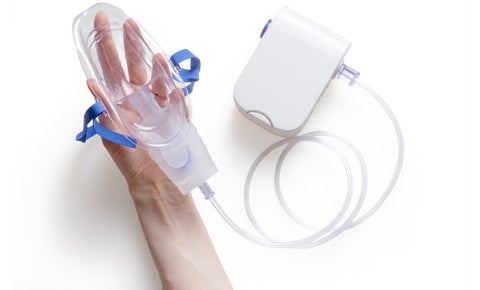
Cleaning and sterilization of nebulizer components are crucial in ensuring you get the most out of the device whole getting the best treatment. Ensure you follow the manufacturer’s instructions to the letter on how to store the unit between uses.
While nebulizer components are designed to last a while, always replace cracked, worn out, discolored, or bent hoses, mouthpieces, or high-contact pieces. As a tip, when replacements are required, ensure you buy them from the same manufacturer or a reputable one who produces components that are compatible with your unit.
who requires a nebulizer mask?
Adults and children with a vast assortment of conditions and diseases that impair respiration are based on the treatments they receive via a nebulizer. These include (but are not limited to) children and adults with the following medical conditions.
- Asthma
- COPD
- Emphysema
- Muscular dystrophy
- Cystic fibrosis
For someone living with any of these conditions, using an inhaler is beyond their capability, particularly if they lack the dexterity in their hands. In such scenarios, a nebulizer guarantees medication is given as need be, even when required in a hurry, as with a rescue inhaler.
Doctors will usually prescribe a nebulizer for young children with upper respiratory ailments and frequent colds. It’s typically a short-term remedy unless your healthcare provider discovers other contributing underlying issues such as asthma.
are you aware toddlers and babies can require a nebulizer mask?
Although diagnosing an infant with asthma can be an uphill battle, in some instances, a toddler or baby will require breathing treatment. However, most will resist a mouthpiece and fight a mask. In such unique situations, a pacifier nebulizer is a lifesaver.
The attachment is a snug fit onto the mouthpiece, causing infants to naturally seal their mouth around it and inhale through their nose. As a result, medication is naturally inhaled and delivered to the lungs.
what kind of medicine is compatible with a nebulizer mask?
Nebulizers can be used to vaporize short-acting and long-acting medication. The common respiratory medications paired with these devices are:
- Cromolyn Sodium: It’s long-term medicine that relaxes the airways and lung muscles.
- Budesonide Formoterol: It’s a bronchodilator and anti-inflammatory rolled into one and used as long-term medication.
- Corticosteroids: It’s used to open up constricted airways and treats asthma.
- Ipratropium Bromide: Although it opens airways, it’s a long-acting drug
does private insurance cover nebulizers?
A nebulizer mask is usually covered under the Durable Medical Equipment section of health insurance policies. Nonetheless, most insurance companies will require you to buy your equipment from certain suppliers to receive coverage. We recommend checking with your insurance company to avoid misunderstandings.
cleaning and care of a nebulizer mask after every use
Please follow the manufacturer’s guidelines to keep your nebulizer spick-and-span. Some of the suggested instructions are:
- Disassemble the nebulizer and clean all the components (except for the finger valve and tubing) in liquid detergent, then rinse with water.
- Once the nebulizer is clean, shake off excess water.
- Reattach the tubing and components of the nebulizer to the air compressor and turn it on for the device to dry in a jiffy. Ensure the nebulizer is entirely dry before it’s neatly tucked away.
disinfecting your nebulizer mask
Sterilizing the device entails following the simple steps below:
- Wash your hands
- Soak all the components of the nebulizer (except the interrupter, mask, and tubing) for at least an hour in a solution of part distilled white vinegar and three parts hot water. The solution must be fresh. Remove the components from the solution and thoroughly rinse them in water.
- Shake off any excess water and leave the components to dry.
Average Lung AirPhysio
ENJOY BETTER BREATHING - Use this 100% Drug Free Device - AIRPHYSIO
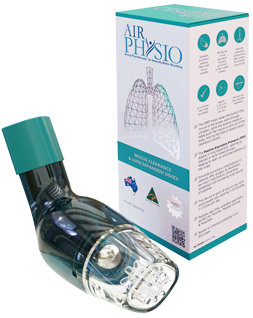
Recent Posts
Sports AirPhysio
IMPROVE YOUR SPORTING PERFORMANCE - Use this 100% Drug Free Device - AIRPHYSIO
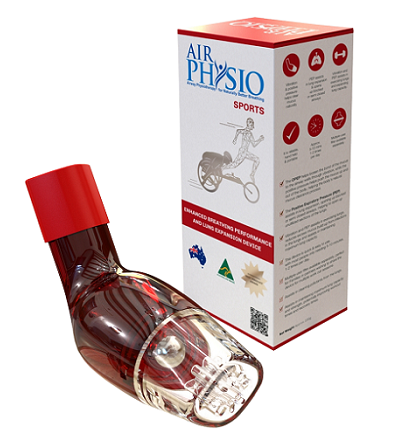
AirPhysio Child
BETTER BREATHING FOR YOUR CHILD - Use this 100% Drug Free Device - AIRPHYSIO
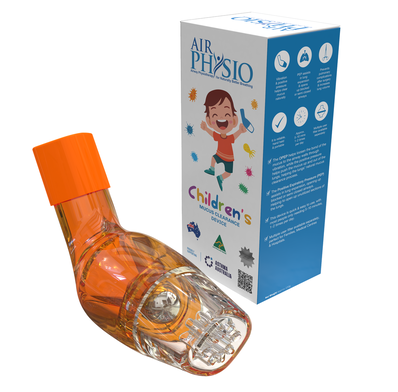
Categories
- asthma (2)
- atelectasis (2)
- bronchiectasis (2)
- copd (3)
- cystic-fibrosis (45)
- featured (10)
- uncategorized (2)

